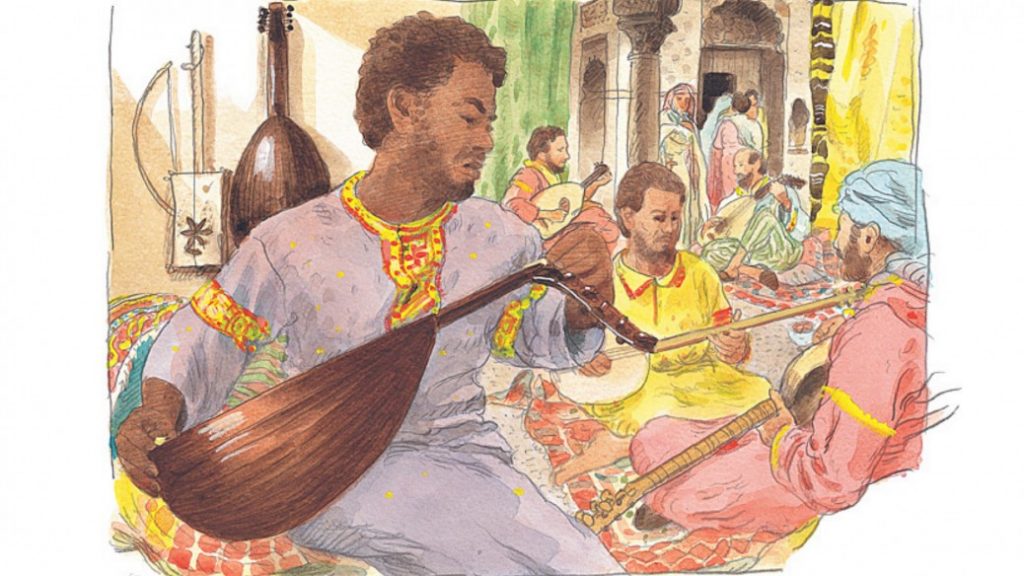This Ramadan, we delve into the captivating legacy of a Muslim trailblazer who left an indelible mark across fashion, music, and entertainment.

Meet Ziryab: the Musician, Astronomer, Fashion Designer, and Gastronome.
The Arrival of Ziryab
In 822, Baghdad’s refined court contrasted sharply with Cordoba’s burgeoning sophistication. Ziryab, a polymath from Baghdad, sought refuge in Cordoba, bringing with him expertise in music, astronomy, poetry, and more. Initially hired as a court musician, Ziryab’s influence transcended music, sparking a fashion revolution.
Born in Iraq in 789, Ziryab’s talents flourished under the mentorship of Ishaq al-Mawsili, earning him recognition at the Abbasid court. His arrival in Cordoba coincided with a cultural renaissance led by Caliph Abd-Al-Rahman II, where his brilliance transformed not only the court but society at large.
Musical Innovations and Culinary, Lifestyle Revolution
Ziryab’s influence extended to music, introducing groundbreaking innovations to Cordoba. His advancements revolutionised medieval Europe with the introduction of the lute, enhanced with extra strings and a new plectrum. By founding the world’s first conservatoire, he paved the way for progress in musical harmony and composition. Beyond music, Ziryab revolutionised culinary and lifestyle practices in Cordoba. He introduced structured dining with distinct courses and preferred crystal glasses over gold tableware, revolutionising table settings and leading to the development of a renowned glass factory in Córdoba.
Fashion Revolution and Enduring Influence
“He introduced the idea of wearing white in the summer, see-through clothing, and pinstripes and set a calendar for seasonal clothing.” – Unknown
Ziryab had a profound impact on fashion, introducing new styles and grooming practices that reshaped society. He popularised seasonal clothing, advocating for lightweight attire in summer and warmer garments in winter. Drawing from his Persian heritage, Ziryab’s innovations in textile design led to the production of coloured striped fabrics, a trend still evident in modern-day Morocco.
Ziryab’s enduring influence is palpable in the lasting fashion trends and cultural changes he pioneered. His legacy transcended borders, with streets, hotels, and cafes throughout the Muslim world bearing his name. Even today, Western scholars like Henry Terrace acknowledge his contributions, recognising the refinement and luxury that characterised the courts of the Caliphs.
While Ziryab’s impact on fashion and lifestyle is celebrated, it also reflects a broader cultural evolution that reverberated throughout the Muslim world and beyond.




